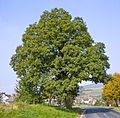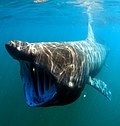| Part of a series on the |
| Biodiversity of Wales |
|---|
 |

The biodiversity of Wales is the wide variety of ecosystems, living organisms, and the genetic makeups found in Wales. [1]
Contents
- Elements
- Floral biodiversity
- Faunal diversity
- Endemism
- Trees 2
- Flowering plants
- Mammals 2
- Birds 2
- Reptiles 2
- Amphibians
- Invertebrates
- Human impact
- Animals
- Management
- Gallery
- See also
- Biodiversity
- Areas
- Organisations
- Law
- References
- Further reading
- Journal articles
- External links
- Tools
- Resources
Wales is a predominantly mountainous peninsula located between England and the Irish Sea, covering 8,023 square miles. It has terrestrial habitats and many protected areas rich in biodiversity, including three national parks and five Areas of Outstanding Natural Beauty (AONB). The national parks being: Snowdonia, Pembrokeshire Coast, and Brecon Beacons, and the AONBs of: Anglesey, the Clwydian Range and Dee Valley, Gower Peninsula, Llŷn Peninsula, and Wye Valley (partially in England). [2] Wales also has many locations categorised as Site of Special Scientific Interest, Special Area of Conservation, Special Protection Area and local nature reserve. There are many zoos and gardens, including the National Botanic Garden of Wales. [1]
On the coast, a great diversity of species such as seals, dolphins, sharks, jellyfish, crabs and lobsters can be found. There are also seabird colonies on the islands near the coast. [1] Species which can only be found in Wales are the Radnor lily and a type of fish, the gwyniad, only found in Llyn Tegid (Bala Lake). [1] [3] The rare fen orchid ( Liparis loeselii ) is one of the most threatened species in northwestern Europe and has vanished from many places in Wales. [4] The Welsh Government funds Natural Resources Wales (NRW), Plantlife, Bridgend County Borough Council and the Wales Biodiversity Partnership coastal ecosystem group to help reconstruct its natural habitat and secure the future of this threatened species. [3] [4]
The Welsh Government works closely with the Wales Biodiversity Partnership (WBP) which promotes and monitors the Wales biodiversity action plan. In 2010 the Welsh government launched a Natural Environment Framework, "A Living Wales", which focuses on sustainable land and marine management in Wales. [5] The Environment (Wales) Act 2016 put into place a range of powers and duties designed to enable the natural resources of Wales to be planned and management in a more sustainable, pro-active and joined-up way than was previously possible.


























